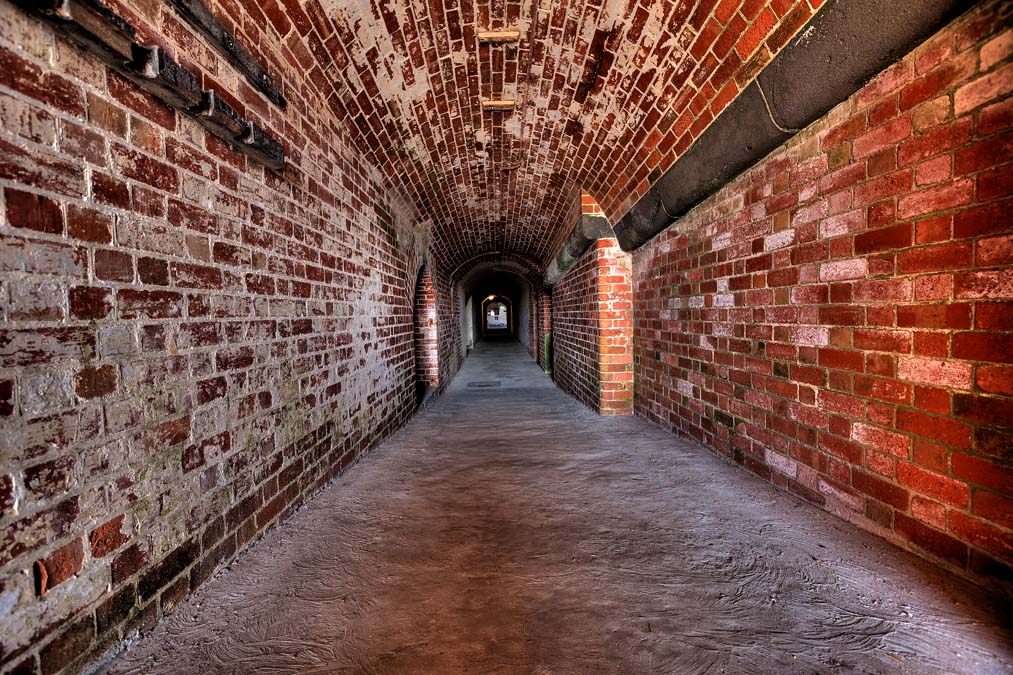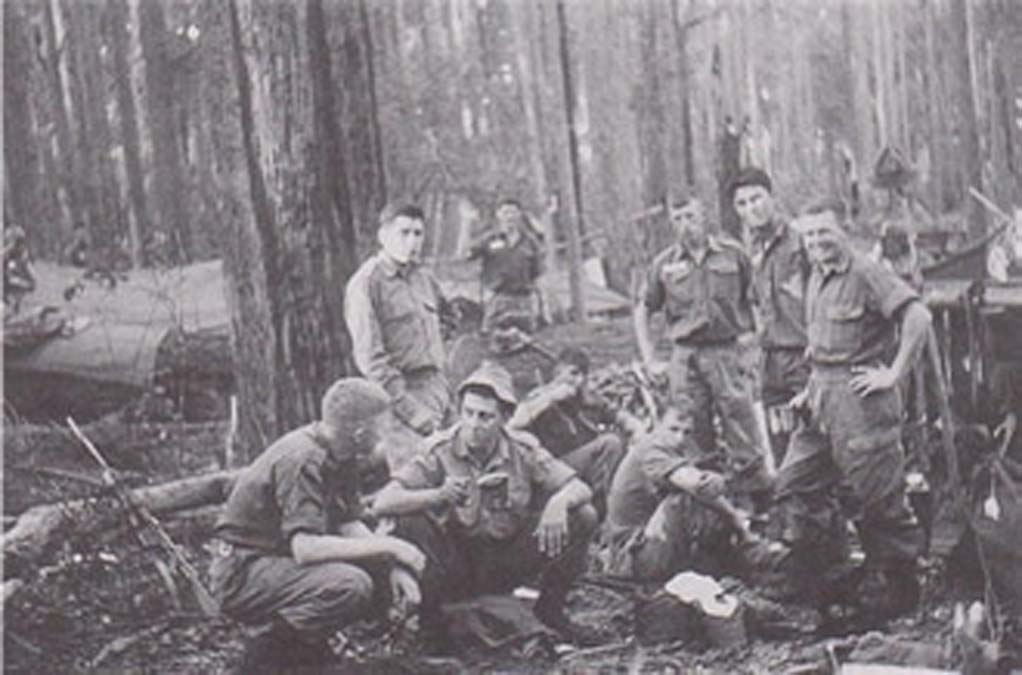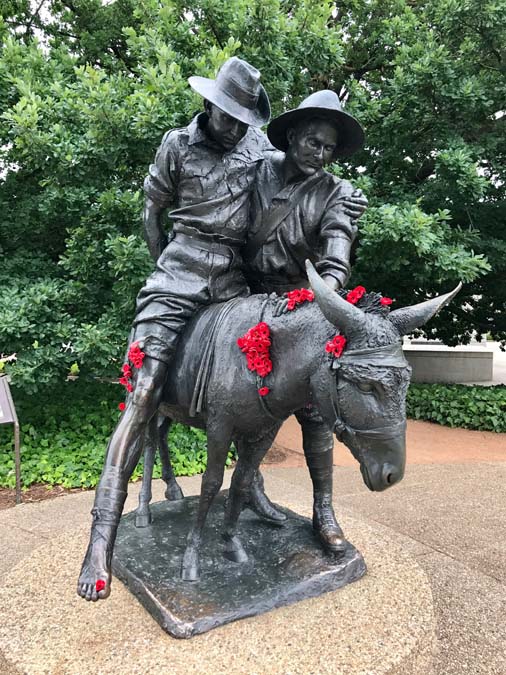
By Stephen Taylor and Peter McCullough
The Point Nepean Quarantine Station offers a glimpse into the early European history of Victoria. Established in 1852, the Station site contains nearly fifty heritage-listed buildings including one which predates that event: the limestone Shepherds Hut, circa 1844, pictured above on the edge of the parade ground.
Today the Quarantine Station is an integral part of Point Nepean National Park which, in 2019, attracted approximately 35,000 visitors. While this historical feature is officially referred to as the Quarantine Station, it has in fact filled a number of roles over the past 170 years and for 33 years it was referred to as the Officer Cadet School, Portsea.
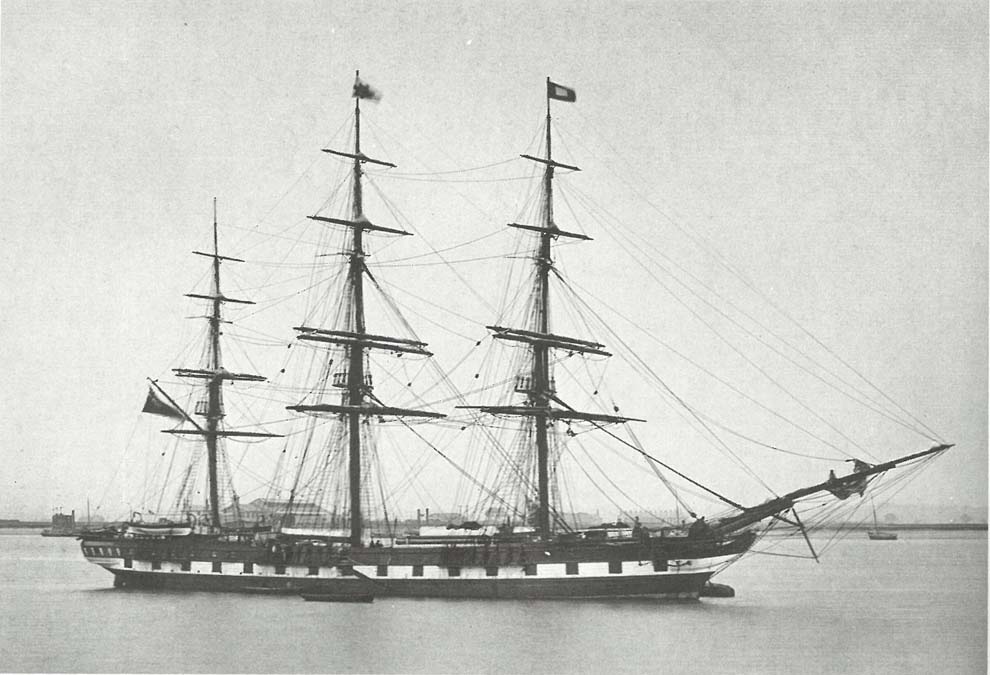
The Quarantine Station
In the early 1850’s colonial authorities were searching for a replacement site for Melbourne’s Point Ormond Quarantine Station. Point Nepean, remote and largely uninhabited, was deemed ideal but, before work could start, the clipper ship Ticonderoga made its appearance in November, 1852.
The Ticonderoga (pictured above) had left Liverpool with 714 passengers and 48 crew and during the voyage an outbreak of typhus resulted in 100 deaths. Temporary accommodation was provided on shore at Point Nepean with tents and some buildings which had previously belonged to limeburners. A further 70 deaths occurred on shore and another 10 are estimated to have occurred after the vessel was released from quarantine on 22 December, 1852.1
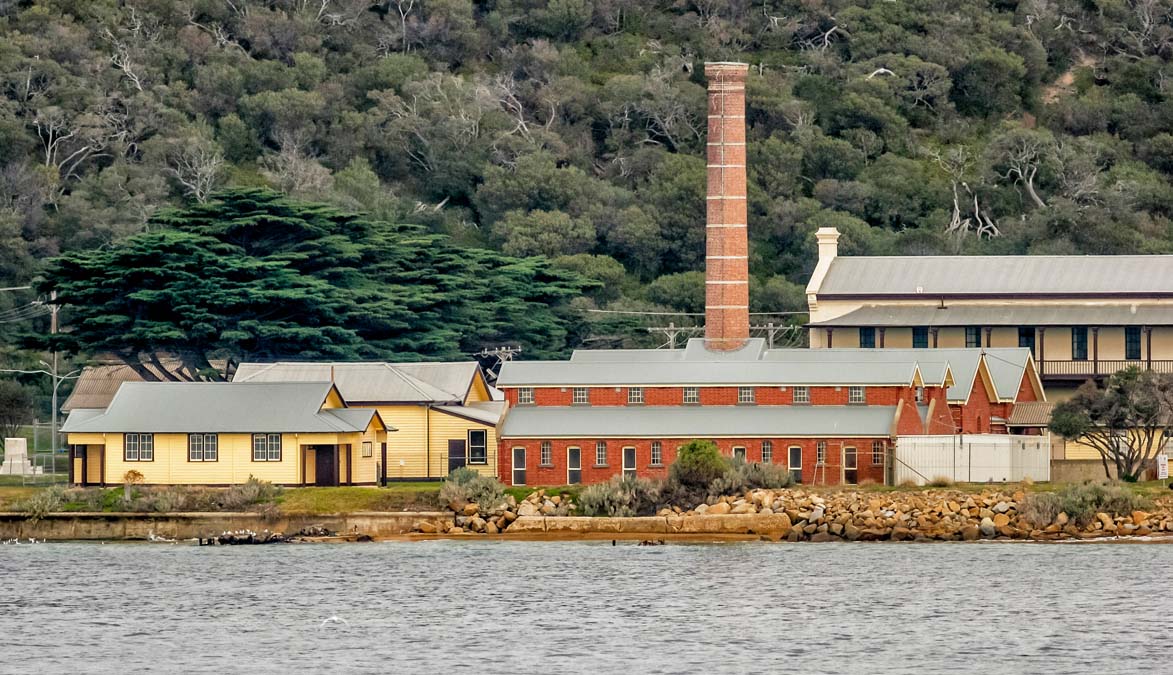
As soon as the urgent task of attending to the health of the Ticonderoga passengers was in hand, attention was given to officially proclaiming the quarantine ground; this appeared in the Victorian Government Gazette of 24 November, 1852. Initially called ‘The Sanitary Station’ it was referred to as such until the 1880’s when ‘Quarantine Station’ became the accepted name.
The crowded conditions on ships as gold seekers rushed from overseas in the early 1850’s meant that diseases spread rapidly and the need for this new facility was quickly confirmed. The first buildings at Point Nepean were simple wooden structures which included hospitals, a disinfecting complex and a morgue. In the late 1850’s a jetty and five two-story hospital blocks were erected. A communal bathhouse was added in the 1860’s, along with a washhouse to clean infected clothing.

A second building phase occurred in the late 19th century when the Quarantine Station began receiving animals as well as people. A jetty was built at Observatory Point to bring them ashore from ships. A school for residents’ children was built, as well as a crematorium to burn the bodies of leprosy patients who were housed well away from the main Quarantine Station.
In 1901, with the proclamation of the Federation of Australia, quarantine came under Commonwealth control. New processing measures were devised, including the ‘foul luggage’ receiving store, disinfection and boiler buildings, all of which became standard features of quarantine stations Australia-wide.
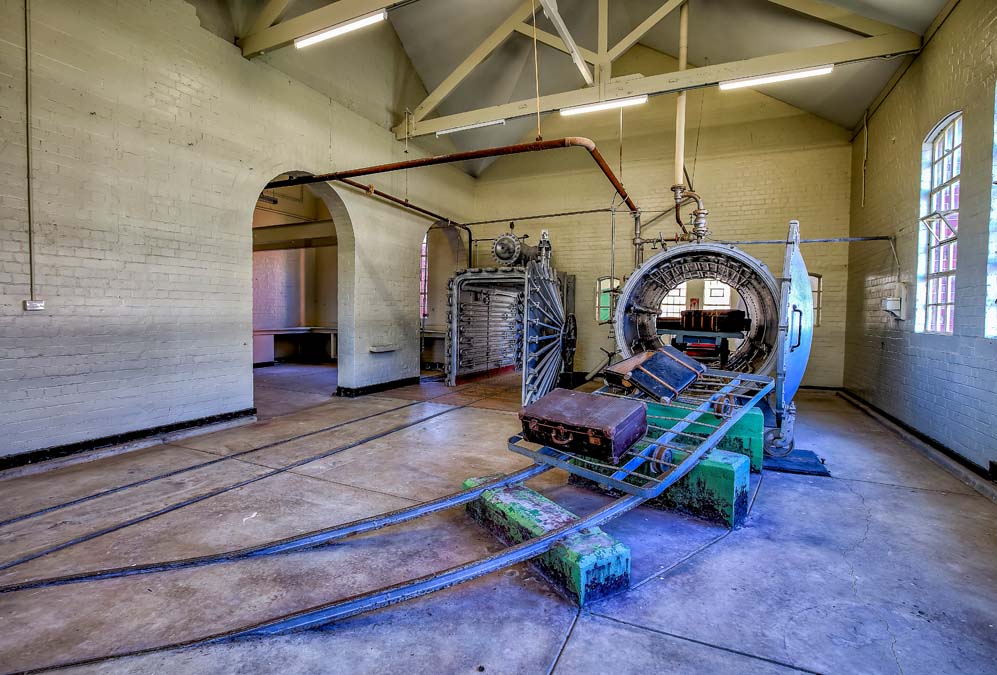
The large administration building, erected in 1916, has a handsome façade and made an impressive addition to the station. A period of intense activity took place between November 1918 and August 1919 when almost 12,000 passengers were quarantines at Point Nepean during the world-wide Spanish flu pandemic. Twelve timber ‘influenza huts’ were built to accommodate this influx.
During the first half of the 20th century the Quarantine Station was used for a variety of other purposes in order to utilize the site when no sick people were present. For example, in the first decade of the century it was used as a summer school by the Victorian Department of Education. Be that as it may, use of the facility gradually declined with the advances in modern medicine and, particularly after the opening of Tullamarine, the growth of international travel by air. The Quarantine Station ceased its original role in 1980.
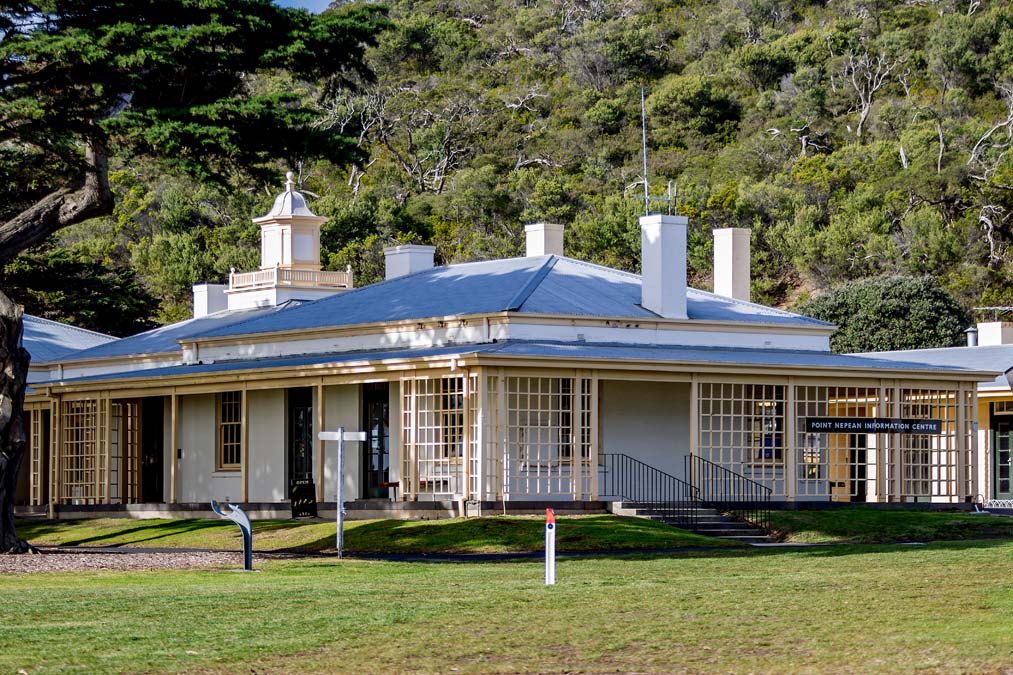
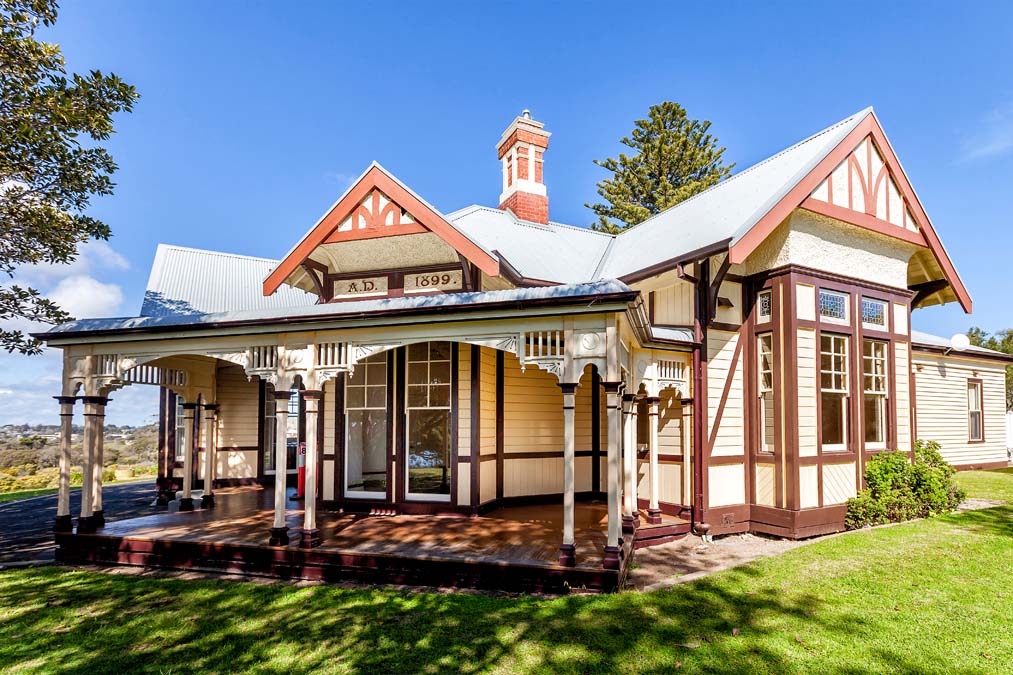
The Officer Cadet School, Portsea
Fortifications were built on the land at Point Nepean from 1878 onwards and these included gun batteries which were installed at Fort Nepean in 1886 and Eagles Nest in 1888. Barracks were constructed at Fort Pearce. These gun emplacements, tunnels and barracks, created for quite a different purpose to the buildings at the Quarantine Station, are also of great interest and make a visit to Point Nepean National Park a day to remember.
Gun Emplacement 6 is a feature of historic importance in that it was the scene of the first act of aggression committed within the British Empire during World War One : on 5 August, 1914 a shot was fired across the bow of the German steamer ‘Pfalz’ when, two hours after war was declared, it tried to slip through the Heads. Co-incidentally, this gun emplacement was the scene of the first shot to be fired in Australia in World War Two when an Australian vessel tried to enter the bay without stopping.
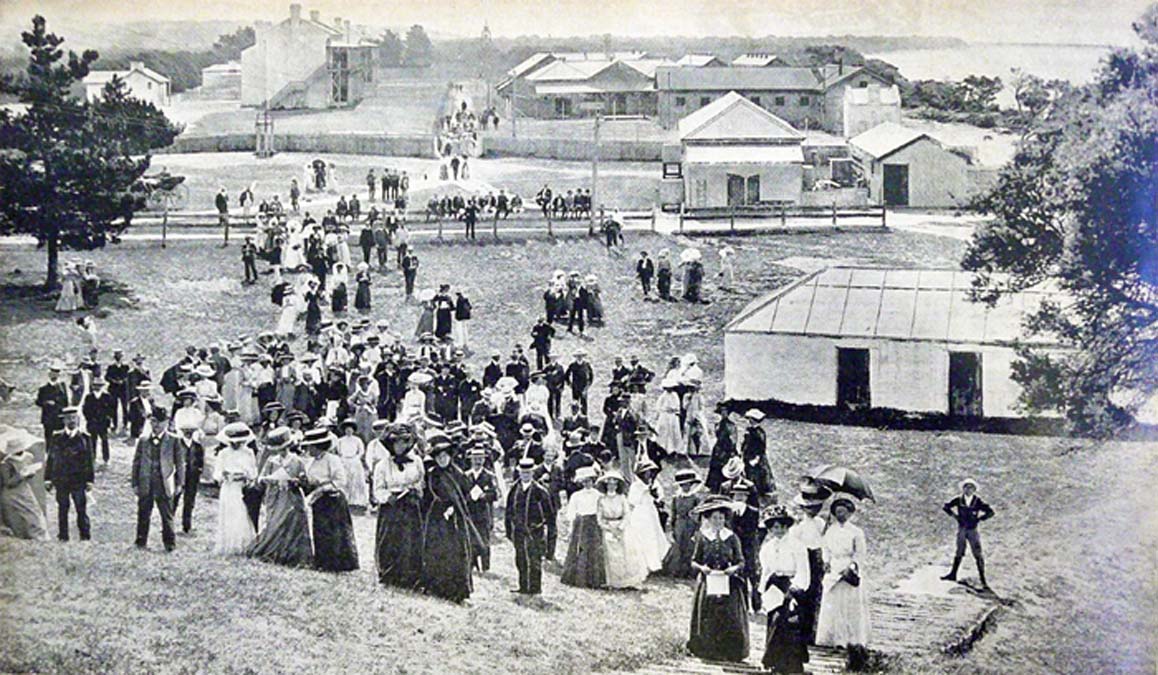
During World War Two the buildings in the Quarantine Station were put to good use and troops were billeted there. In the immediate post-war period Australia had commitments to Korea and Japan and the newly-introduced national service scheme; an increase in the number of junior officers in the army was necessary.
Accordingly, in January, 1952, the Officer Cadet School, Portsea began training officers for the Australian army. To cater for this different role a barracks, library and gymnasium were built in the 1960’s. Facilities outside the Quarantine Station were developed by the Army to assist with the combat and skills training of the officer cadets. These areas were also used by national service trainees who were required to participate in a number of weekend camps as part of their training.
During the 33 years of operation until it closed in 1985 a total of 3,544 cadets graduated including 2,826 Australian Regular Army, 30 RAAF, and 688 foreign students from 14 friendly and allied countries. For many years the OCS, Portsea provided the Australian Regular Army with the bulk of its junior officers; between 1952 and 1985 OCS, Portsea trained 40% of the newly commissioned officers compared with 28% from the Royal Military College, Duntroon.
Portsea had a number of graduates who achieved senior rank in the army or were successful in civilian life. Three rose to the level of Chief of Army. While Portsea’s most famous graduate was Major Peter Badcoe who was posthumously awarded the Victoria Cross for his service in Vietnam, many others received bravery and distinguished service awards.
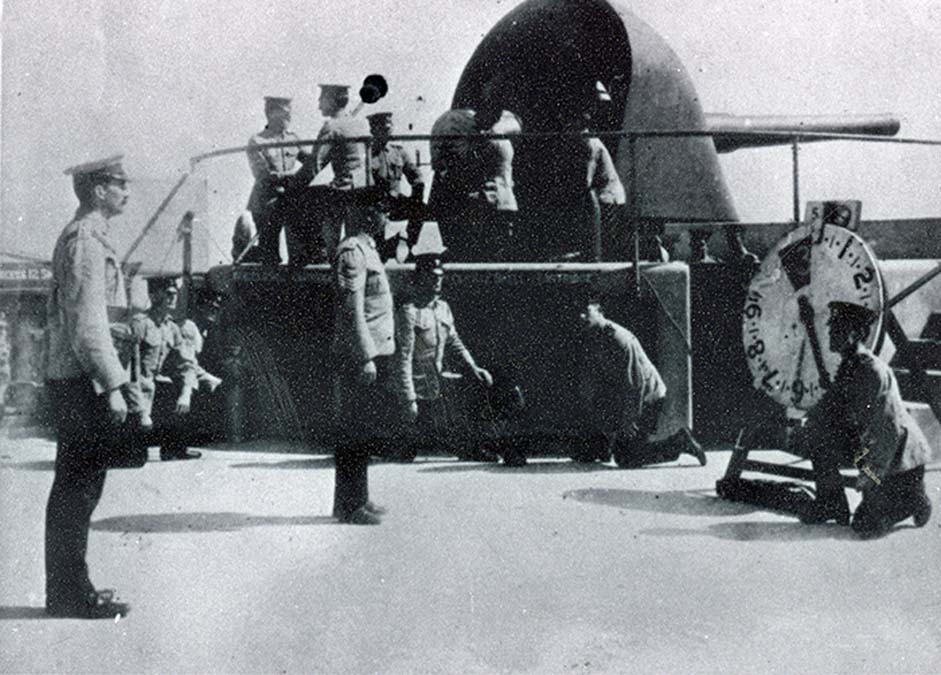
Following a review of military training establishments in Australia in the mid-1980’s the OCS, Portsea was eventually closed in 1985 and RMC, Duntroon assumed sole responsibility for training army officers. Following the termination of officer training the site was used by the Army School of Health until it was transferred to Bonegilla in 1997.
In 1967 a Memorial Wall dedicated to OCS graduates who lost their lives on active service had been built. Overlooking the parade ground, it contained 22 names. After Portsea’s closure in 1997 the Memorial Wall was dismantled and re-erected within the grounds of RMC, Duntroon.

The Kosovars
The Quarantine Station was used to house 400 Kosovar refugees from the Bosnian War (1992-1995). By the time it was considered safe for them to return home in June, 1999, the Kosovars had enjoyed Australian hospitality such as bilingual support, school, and a weekly allowance. Families were taken to museums, zoos, festivals and special events.

The Quarantine Station Today
Parts of Point Nepean were declared as a National Park in 1988 during the euphoria of the Bicentennial celebrations. The Australian Government offered to sell the land to the Victorian Government in 1998 and again in 2001 but the state rejected the offer.
In 2002 the Department of Defence proposed selling 311 hectares (770 acres) of land for development, retaining 1.6 hectares (4acres) which contained contaminated soil and unexploded ordnance. The proposed sale was abandoned in 2003 following strong community protest. At that time buildings in the Quarantine Station were deteriorating as there were no in-house users and the future of the complex was uncertain. Then in 2004 90 hectares (220 acres) of Defence land was transferred to the Commonwealth Government Point Nepean Community Trust which, with $30 million at its disposal, was able to undertake remedial work at the Quarantine Station: buildings were made watertight, verandahs and balconies were replaced, and the sewerage system was repaired.

The former Quarantine Station was formally transferred to the Victorian Government on 8 June, 2009. The Commonwealth also transferred 205 hectares (510 acres) of bushland (the former Firing Range area) to Parks Victoria and the remaining 17.6 hectares (43 acres) at the Park entrance to the Mornington Peninsula Shire for community use.
The Quarantine Station was opened to the community as part of the Point Nepean National Park in December, 2009, and is still managed by Parks Victoria. However proposals for the future development of the site still arouse considerable interest. In 2014 there was a groundswell of protest when the then Napthine Government proposed to lease 64 hectares to the Point Leisure Group. The newly-elected Andrews Government scrapped the proposed $100 million development and returned to the drawing board.

Then in January, 2018 a master plan for the development and use of Point Nepean National Park was released; it incorporated an ‘optimum use scenario’ which included accommodation ranging from camping (short term and ‘glamping’, but no long term caravans) to a boutique hotel. Two wings of the 1960’s officer cadet accommodation and a former office building were targeted for demolition while space was set aside for two new unidentified buildings. The objective was to boost visitor numbers to 60,000. Environmentalists hailed the new plan as a victory against large-scale development of public land.
Making use of the initial allocation of $3.7 million, some of the tasks outlined in the Master Plan have already been completed: an upgrade of Defence Road enabling bicycle access to the Point and the installation of new visitor facilities such as picnic tables, BBQs and drinking water fountains. The upgrade of the disinfecting complex and the installation of park-wide interpretation and storytelling signs are underway and are expected to be completed by this December. A similar time frame has been set for the provision of new, low impact, short stay camping experience, including access to pre-pitched tents and basic facilities. Coinciding with these developments has been the resumption of service by the shuttle bus thereby enabling visitors to visit all parts of the Park in some degree of comfort.
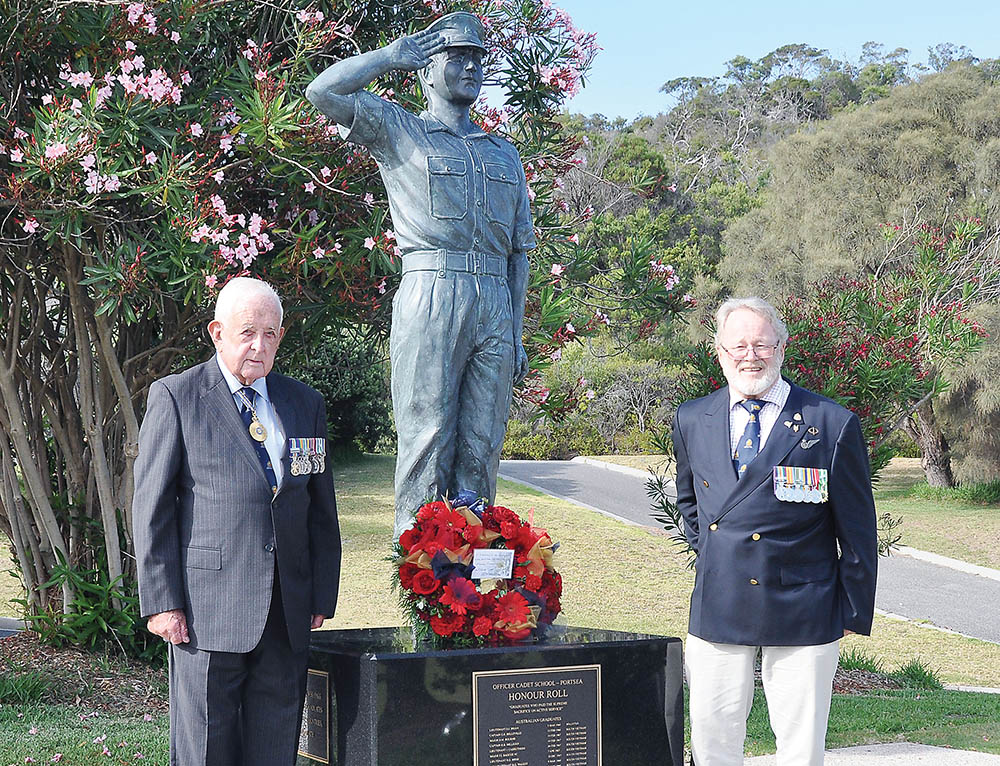
Behind the scenes, preliminary work has been carried out so that the University of Melbourne can obtain funding for marine science related research relevant to the Park, and ultimately a National Centre for Coasts and Climate to be located in Badcoe Hall. Finally, a Point Nepean Advisory Group has been appointed to ensure the various proposals have community support.
In mid July 2021 it was announced that stage one of the 2018 master plan – pre-pitched tents set on platforms between the water and heritage buildings – would be in place next year. It will be the first time camping has been allowed in the Point Nepean National Park.
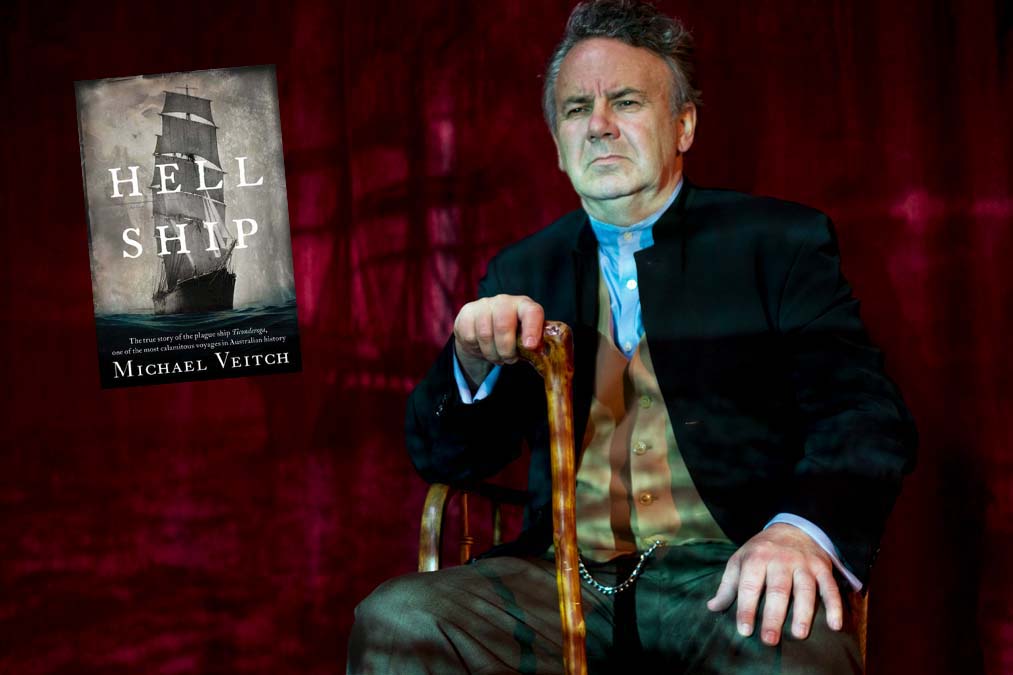
The Memorial Statue
In 2002 two retired Lieutenant Colonels (Bob de Haas and Paul Asbury), both of whom graduated from Portsea in 1967, established the OCS Alumni. Another retired Lieutenant Colonel, Ossie Kleinig, was prevailed upon to record the School’s history. In 2008 Bob de Haas articulated his vision for a statue, with the likeness of a typical cadet, to be erected overlooking the Parade Ground. It would occupy the very spot where the Memorial Wall had once stood.
Although Bob de Haas passed away in 2018, Paul Asbury and Ossie Kleinig were determined to ensure that his vision was realized. Over the next two years a well-known sculptor (Peter Corlett2) was engaged and approvals were obtained from the Victorian State Government, Mornington Peninsula Shire, Bunurong Land Council, and Parks Victoria. An appeal to members of the Alumni raised $124,000 which was sufficient not only for the statue but also for the base, plaque and surrounds. The plaque, attached to the plinth, contains the 22 names of those graduates who died on active service. Major support and detailed work was provided by RSL Victoria, the Rye RSL Sub-branch and two former army officers who happened to live in the area: John Wilson and Robin McBride.

‘Don’t forget me Cobber’ 
‘Simpson and his Donkey’
By early 2021 all was in readiness for the unveiling but with the general uncertainty surrounding such events it was decided to have a Virtual Unveiling Ceremony. This was held on 18 March with the on-site unveiling being carried out by two former graduates: Major General David McLaughlan AO and Lieutenant Colonel Robin McBride.
The statue will provide visitors with a permanent reminder of the contribution made on the site by the Officer Cadet School, Portsea and how the School influenced the lives and careers of the cadets who attended.
Footnotes
1. HELL SHIP. The Assistant Surgeon on the ill-fated Ticonderoga was Dr. James Veitch. The young surgeon worked tirelessly both on the vessel and in the primitive conditions of the tented camp on the shoreline, trying to save those he could. He was assisted in his task by a young Highland woman passenger, Annie Morrison, who acted as his nurse. He later married Annie and settled in central Victoria where James Veitch assumed the role of quiet country doctor and local councillor.
The story of the Ticonderoga was passed down through generations of the Veitch family but it was left to James’ great-great-grandson, Michael Veitch, to record the event: ‘Hell Ship’, a gripping narrative account of the voyage based on eye-witness testimony, letters, subsequent accounts, and the evidence of the Royal Commission, was published in 2018. Subsequently Michael Veitch created ‘Hell Ship : The Journey of the Ticonderoga’, a one man theatre piece in which he takes the audience on his great-great-grandfather’s journey.
Michael Veitch is an Australian author, actor and broadcaster, best known for his roles on the comedy sketch shows The D Generation, Fast Forward and Full Frontal. He has written nine books, mostly about crew members of aircraft in World War Two. His most recent publications are ‘Turning Point: The Battle for Milne Bay 1942’ and prior to that ‘Hell Ship.’
2. PETER CORLETT is a Melbourne-based sculptor, known for his full-figure sculptures cast in bronze, especially his memorial works. Amongst the best known of his sculptures are ‘Simpson and his Donkey’ at the Australian War Memorial, Canberra, and the ‘Don’t forget me Cobber’ statue in Fromelles, France, which was later replicated at the Shrine of Remembrance, Melbourne.
References:
Notes supplied by Lt. Col. (Ret.) Ossie Kleinig and local photographer Barry Irving.
Video ‘Officer Cadet School, Portsea. Statue Unveiling. 18 March, 2021.’
Photographs: Yanni, Barry Irving, Nepean Historical Society, State Library of Victoria and supplied.


